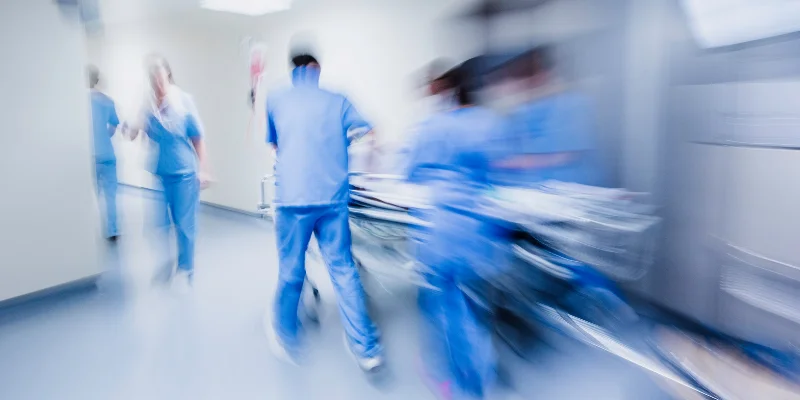Stroke: Early Action Saves Lives

Stroke remains one of the leading causes of death and disability worldwide. It occurs suddenly, often without warning, and its impact can be life-changing for patients and families.
What Is a Stroke?
A stroke happens when the brain’s blood supply is disrupted. Without oxygen, brain cells begin to die within minutes.
Types of Strokes
There are two major types of strokes:
Ischaemic stroke: Most common type of stroke. Ischaemic stroke is caused by a blood clot blocking an artery in the brain.
Haemorrhagic stroke: Caused by a ruptured blood vessel that bleeds into or around the brain.
Transient Ischaemic Attack (TIA)
A transient ischaemic attack (TIA), often called a “mini-stroke,” happens when the blood flow to a part of the brain, retina, or spinal cord is briefly interrupted. This temporary blockage triggers stroke-like symptoms, but unlike a full stroke, it does not cause lasting damage. The disruption in blood supply typically lasts only a few minutes to a few hours before clearing on its own.
Although the effects fade, a TIA should never be ignored. It is a vital warning that a person has a significantly greater chance of suffering a major stroke in the near future. If any symptoms appear, even if they disappear quickly, seek medical attention immediately. Rapid assessment and treatment can significantly reduce the risk of a future stroke.
Recognising Stroke Symptoms
Stroke symptoms appear suddenly and must be recognised promptly. The B.E.F.A.S.T. approach is widely used as a guideline.
Spotting a Stroke with B.E.F.A.S.T.
B - Balance: Sudden dizziness or loss of coordination
E - Eyes: Sudden vision changes or blindness
F - Face: Facial drooping or uneven smile
A - Arms: Weakness or numbness, usually on one side
S - Speech: Slurred or confused speech
T - Time: Immediate medical attention is critical
Seek emergency assistance immediately if you notice any of the symptoms described above.
Recognising Stroke Risk Factors
Stroke risk increases with age and family history, but many factors are preventable.
Non-modifiable risks:
Age
Family history
Previous stroke or TIA
Modifiable risks:
Effective prevention means managing these risks through lifestyle changes and regular medical screening.

How Doctors Diagnose Stroke
Diagnosing a stroke involves a thorough clinical assessment, review of the patient’s medical history, and the use of specific diagnostic tests. Early and accurate identification is essential, as it allows timely treatment and significantly improves the chances of recovery.
Imaging Tests
Computed Tomography (CT) Scan: A brain CT scan is usually done first. It helps doctors quickly determine whether the stroke is caused by a blocked artery (ischaemic stroke) or bleeding in the brain (haemorrhagic stroke) by revealing areas of bleeding or tissue damage.
Magnetic Resonance Imaging (MRI): An MRI offers more detailed imaging and can identify even small areas of brain injury caused by lack of blood flow or bleeding.
Blood Tests
Complete Blood Count (CBC): Checks for conditions such as anaemia or infection, which may influence treatment decisions.
Clotting Profile: Measures how quickly the blood clots to identify bleeding risks or clotting disorders.
Blood Glucose Levels: Helps rule out low or high blood sugar as a possible cause of neurological symptoms.
Lipid Profile: Assesses cholesterol levels that may contribute to atherosclerosis and increase stroke risk.
Cardiac Assessment
Treatment Approaches for Ischaemic Stroke
Thrombolysis (tPA): Clot-dissolving medication, effective within 4.5 hours of onset.
Mechanical thrombectomy: Advanced procedure to remove clots from large arteries, possible up to 24 hours for selected cases.
Antiplatelet therapy: Reduces recurrence risk.
Anticoagulants: Used in patients with atrial fibrillation or embolic strokes.
Surgical intervention: Reserved for specific severe cases.
Treatment Approaches for Haemorrhagic Stroke
Blood pressure control to minimise risk of further bleeding.
Reversal of anticoagulants where necessary.
Surgical intervention to repair vessels, relieve pressure, or remove clots.
Rehabilitation and Long-Term Care
Rehabilitation begins soon after stabilisation. Our multidisciplinary team supports patients with:
Physiotherapy to regain strength and movement.
Occupational therapy to restore independence in daily activities.
Speech therapy for communication and swallowing recovery.
Cognitive therapy for memory and problem-solving.
Psychological support for emotional resilience.
At Prince Court Medical Centre, rehabilitation is tailored to each patient’s needs, with the goal of restoring function, independence, and quality of life.
Prevention and Lifestyle Management
Preventive care is central to reducing stroke risk:
Maintain healthy blood pressure and cholesterol.
Manage diabetes effectively.
Exercise regularly.
Follow a balanced diet low in salt and processed foods.
Stop smoking and limit alcohol.
Manage stress and ensure adequate sleep.
Attend routine check-ups and screenings.
Comprehensive Stroke Care and Recovery at Prince Court Medical Centre
Stroke is a medical emergency, but with early intervention and structured rehabilitation, recovery outcomes can be greatly improved.
Prince Court Medical Centre offers comprehensive stroke care with expert specialists, advanced imaging technology, and a dedicated
rehabilitation team. If you experience symptoms of a stroke, seek medical attention immediately. For those with risk factors, consult our
neurologists about screening and prevention strategies.



















